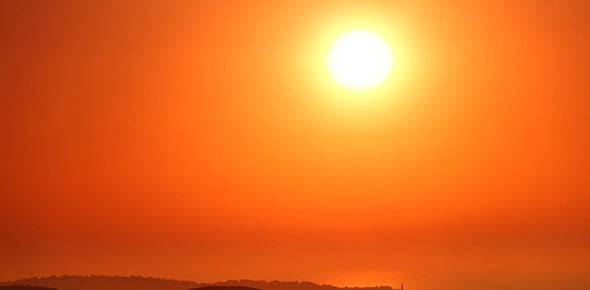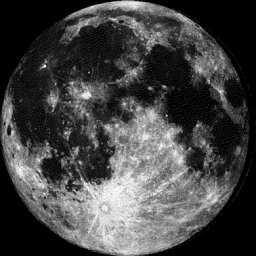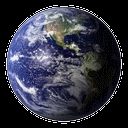Sun, Earth & Moon

Take a quiz to test your knowledge on the Sun, Earth & Moon.
- 1.
Why is it essential to wear special glasses in a solar eclipse. (Mention the specific part of the eye that is affected).
- 2.
Why is the Moon's gravitational pull on Earth stronger than the Suns if the Sun is bigger than the Moon?
- 3.
What is a Solar Eclipse?
- A.
When the Earth is in between the Sun and Moon.
- B.
When the Moon is in between the Sun and Earth.
- C.
When the Sun is in between the Earth and Moon.
- D.
A Lunar Eclipse.
Correct Answer
B. When the Moon is in between the Sun and Earth.Explanation
A solar eclipse occurs when the Moon comes between the Sun and the Earth, blocking the sunlight and casting a shadow on the Earth's surface. This happens when the Moon is in its new moon phase and its orbit aligns with the Earth and the Sun. As a result, the Moon appears to cover the Sun partially or completely, creating a temporary darkness during the day.Rate this question:
-
- 4.
A Lunar eclipse is when the Moon is in between the Sun and Earth.
- A.
True
- B.
False
Correct Answer
B. FalseExplanation
A lunar eclipse occurs when the Earth is in between the Sun and the Moon. This alignment causes the Earth's shadow to fall on the Moon, resulting in the Moon appearing darkened or reddish in color. Therefore, the statement that a lunar eclipse happens when the Moon is in between the Sun and Earth is incorrect.Rate this question:
-
- 5.
The Moon is full of _______.
Correct Answer
cratersExplanation
The Moon is full of craters. Craters are bowl-shaped depressions on the Moon's surface caused by the impact of meteoroids, asteroids, and comets. Due to the Moon's lack of atmosphere and geological activity, these craters remain preserved over time. The Moon's surface is covered with thousands of craters of various sizes, providing evidence of its violent history and the constant bombardment it has endured.Rate this question:
- 6.
The Earth is shaped?
- A.
Sphere
- B.
Circle
- C.
Oval
- D.
Ellipse
Correct Answer
A. SphereExplanation
The Earth is shaped like a sphere because it is mostly round and has a slight bulge at the equator. This shape is a result of the Earth's gravitational forces pulling equally from all directions, causing the planet to form a shape that minimizes surface area and maximizes volume. Additionally, the Earth's rotation also contributes to its spherical shape, as the centrifugal force caused by the rotation causes the equator to bulge slightly.Rate this question:
-
- 7.
What is it called when the length of day and night are equal?
- A.
Equanox
- B.
Equalnox
- C.
Equinox
- D.
Samenox
Correct Answer
C. EquinoxExplanation
Equinox refers to the phenomenon when the length of day and night are equal. It occurs twice a year, in spring and autumn, when the tilt of the Earth's axis is neither towards nor away from the Sun. During an equinox, the Sun is directly above the Earth's equator, resulting in approximately 12 hours of daylight and 12 hours of darkness worldwide. Equinox is the correct term used to describe this occurrence.Rate this question:
-
- 8.
The vertical difference between a high and low tide is called,
- A.
Range tide
- B.
Tidal range
- C.
Range tidal
- D.
Tide range
Correct Answer
B. Tidal rangeExplanation
The vertical difference between a high and low tide is commonly referred to as the tidal range. This term is used to describe the variation in water level between the highest point reached by a rising tide and the lowest point reached by a falling tide. It is an important measurement for understanding the dynamics of tides and their impact on coastal areas.Rate this question:
-
- 9.
The phases of the moon are called ________ when it is New Moon to Full Moon.
Correct Answer
WaningExplanation
The correct answer is "Waning" because during the phases of the moon from New Moon to Full Moon, the illuminated portion of the moon that we see from Earth gradually decreases, or "wanes". This is in contrast to the phases from Full Moon to New Moon, where the illuminated portion gradually increases, or "waxes".Rate this question:
- 10.
The surface of the moon is called moon phase.
- A.
True
- B.
False
Correct Answer
B. FalseExplanation
The surface of the moon is not called moon phase. Moon phase refers to the different illuminated portions of the moon as seen from Earth. The surface of the moon is simply referred to as the lunar surface or the moon's surface.Rate this question:
-
- 11.
There is no EROSION on the Moon because,
- A.
It has no wind
- B.
It has no water
- C.
It has no air
- D.
All of the above
Correct Answer
D. All of the aboveExplanation
The correct answer is "all of the above" because erosion is the process of wearing away or breaking down of rocks and land surfaces by external forces like wind, water, and air. Since the Moon lacks all of these elements, there is no erosion occurring on its surface. Without wind, water, or air, there are no agents to cause erosion on the Moon.Rate this question:
-
- 12.
Day happens when the part of the Earth you are on is....
- A.
Away from the sun
- B.
Towards the sun
- C.
In between the sun
- D.
Behind the sun
Correct Answer
A. Away from the sunExplanation
During the day, the part of the Earth you are on is away from the sun. This is because daylight occurs when the sun's rays directly reach and illuminate a specific area on the Earth's surface. Therefore, when you are in a location that is facing away from the sun, it is daytime for you.Rate this question:
-
- 13.
The Earth is rotating on.......(there can be more than 1 correct answer).
- A.
Its axis
- B.
A 23.5 degree angle
- C.
Its bottom
Correct Answer(s)
A. Its axis
B. A 23.5 degree angleExplanation
The Earth is rotating on its axis, which is an imaginary line passing through its center from the North Pole to the South Pole. This rotation causes day and night as different parts of the Earth are exposed to the Sun's light. Additionally, the Earth is tilted at a 23.5 degree angle, which is responsible for the changing seasons throughout the year.Rate this question:
-
Quiz Review Timeline +
Our quizzes are rigorously reviewed, monitored and continuously updated by our expert board to maintain accuracy, relevance, and timeliness.
-
Current Version
-
Mar 21, 2023Quiz Edited by
ProProfs Editorial Team -
Jul 25, 2015Quiz Created by
Gracesoonalole
 Back to top
Back to top




